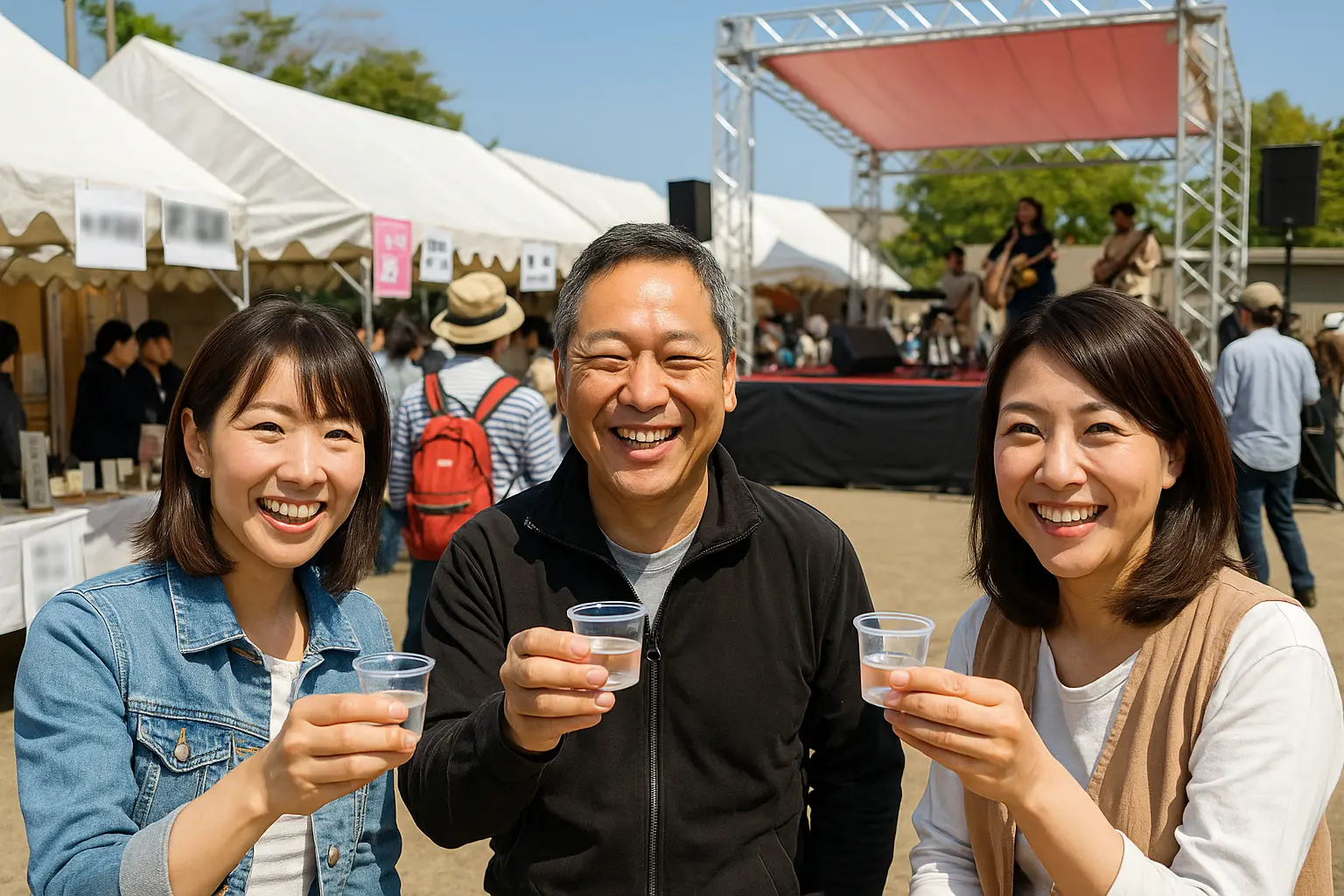
Sake and Festivals: A Cup Connecting Hearts and Seasons
From offerings to the gods to celebratory toasts among people—explore the profound and flavorful role that sake has played in Japanese festivals.
Sake and Festivals: A Cup Connecting Hearts and Seasons
“In this single cup lie the gods, the people, and the blessings of the season.”
Sake feels like an existence that captures the entire atmosphere of festivals. Cherry blossoms dancing in spring, cicadas singing in summer, autumn leaves and harvest, winter wrapped in snow. In every season’s every festival, sake naturally finds its place. Why is this?
Sacred Communion: Offering to Gods, Sharing with People
Miki (Sacred Sake) is “Liquid Prayer”
Sake has long been a “sacred liquid” offered to the gods.
- Miki (Sacred Sake): An offering to the deities. The sake quietly placed before the altar before festivals begin is prayer itself.
- Ceremony of Divine Blessing: When that sacred sake is served to people, a “bridge” forms where gods and humans partake of the same substance.
- Purification Meaning: By partaking before sacred rituals, one purifies body and mind, preparing to step into the divine realm.
Indeed, sake is a “mythical communication medium” through which we converse with the gods by drinking.
The Magic That Sake Brings to Festivals
What Sake Connects: The “Ma” (Space) Beyond Words
In Japanese festivals, mixed with the sound of wooden clappers, drum rhythms, and flute melodies, there’s always the “presence of sake” somewhere.
- Signals of Beginning and End: Starting with offerings of sacred sake, ending with participants sharing it together. This is the rhythm of ritual.
- Dialogue Deeper Than Words: When exchanging cups, people communicate heart to heart without words. In that “silent laughter together,” the power of sake dwells.
- Time Capsule of Four Seasons: Spring’s ginjo, summer’s chilled sake, autumn’s hiyaoroshi, winter’s warmed sake—seasonal tastes are etched on the tongue along with memories.
Four Seasons of Festivals, Sake’s Pleasures
🌸 Spring: Cherry Blossoms, New Buds, and Fragrant Sake
-
Hanami (Cherry Blossom Viewing, March-April)
Exchanging cups under cherry trees on blue tarps is truly a spring tradition of Japan.
→ Fragrant ginjo sake or subtly pink sparkling sake pairs beautifully. -
Rice Planting Festivals (May-June)
In rituals praying to gods for new seasons and harvests, sake offered to rice fields is shared with villagers.
→ In the cycle of “offering to gods → drinking by people,” the symbiosis of nature and humans emerges.

🎆 Summer: Heat, Night Sky, and Crisp Chilled Sake
-
Gion Festival (July, Kyoto)
On nights of float processions, threading through crowds with Fushimi sake in hand. A perfect cup for summer nights.
→ Crisp, chilled junmai sake soothes the festival’s heat. -
Tanabata Festival
Stars, wishes, and sake. Listening to flute sounds echoing by the riverside.
→ Clear ginjo sake is truly “drinking the Milky Way.”

🍁 Autumn: Harvest Season with Fragrant, Deep Cups
-
Niinamesai (November)
A national ceremony where the Emperor offers new rice and new sake to the gods. Locally, toasting with “first pressing.”
→ Fresh sake with rice sweetness is autumn’s harvest itself. -
Moon Viewing (15th day of 8th lunar month)
Gold flakes swaying in cups reflecting the full moon. Creating a mystical time.
→ Smooth junmai ginjo or special moon-viewing sake with gold flakes recommended.

❄️ Winter: The Power of Warmed Sake to Melt Cold and Hearts
-
New Year
Welcoming the new year with otoso, renewing both body and spirit.
→ Praying for health with medicinal sake, confirming family bonds with san-san-kudo. -
Snow Festivals and Kamakura
The bliss of tasting warmed sake inside snow-surrounded domes.
→ In the cold, aged “hiyaoroshi” warmly envelops the body.

“Sake Town” Festivals: Breweries Open, Towns Get Tipsy
-
Brewery Openings
At spring new sake unveiling events, brewers sometimes share behind-the-scenes sake-making stories.
→ That cup drunk shoulder-to-shoulder with locals becomes a travel memory. -
National Sake Festivals
Hiroshima-Saijo, Kobe-Nada, Akita-Yuzawa—days when entire towns transform into sake theme parks.
→ Booths lined with special brews and limited editions are “treasure hunts” for sake lovers.

Festival Manners: Even When Tipsy, Keep Your Heart Respectful
- Etiquette of Mutual Pouring: The basic rule is not to pour for yourself.
- Etiquette of Receiving: Receive cups with both hands, making eye contact saying “Itadakimasu.”
- Sacred Sake and Otoso are Special: Not just alcohol, but cups to be received with reverence.
Conclusion: In That One Cup, a Thousand Years of Stories Dwell
No matter how times change, festivals and sake continue together as a set.
“I want to feel the divine,” “I want to talk with people,” “I want to taste the seasons.”
When such feelings arise, people naturally reach for cups.
Now, at the next festival, try listening to the aroma of sake. There, the same heartbeat as someone from a thousand years ago surely flows.

To know sake culture more deeply → Explore Regional Styles or Read about Shinto and Sake Relationships